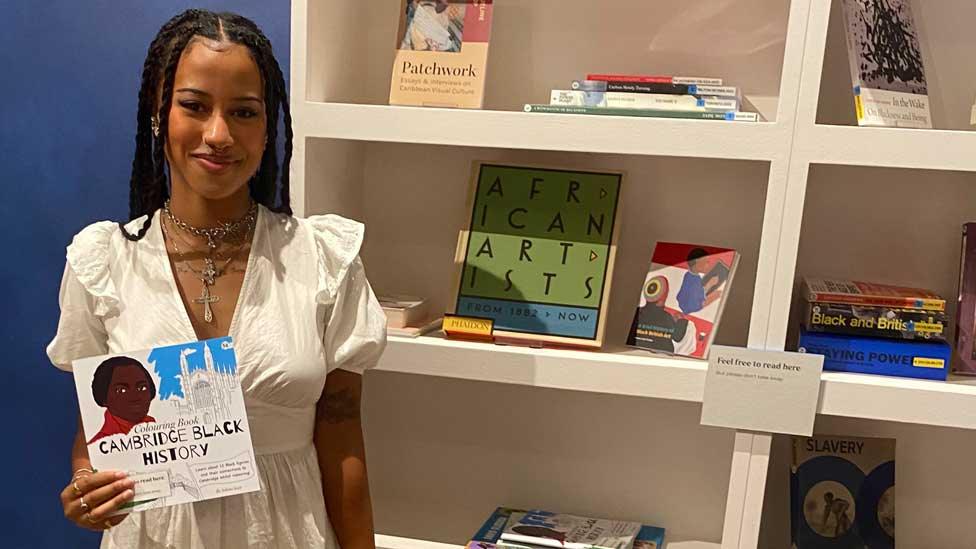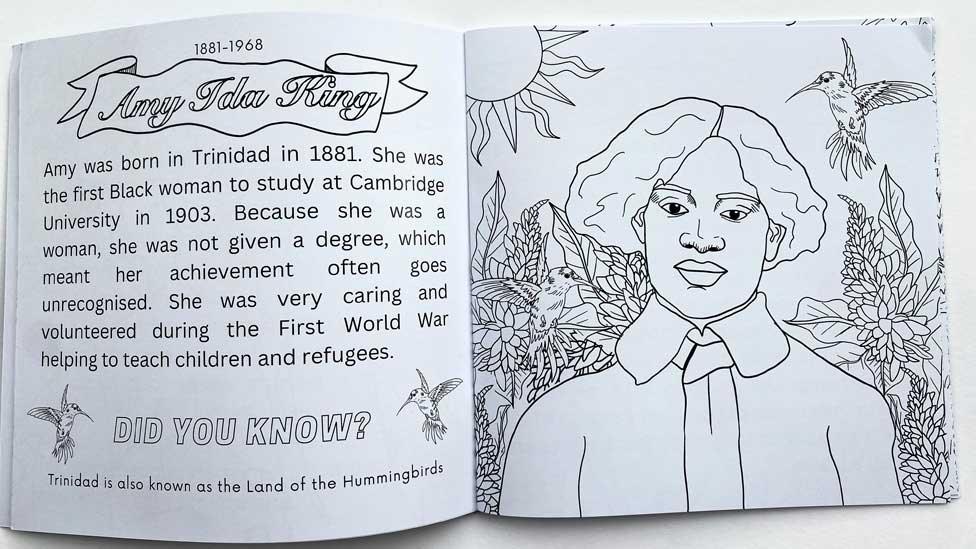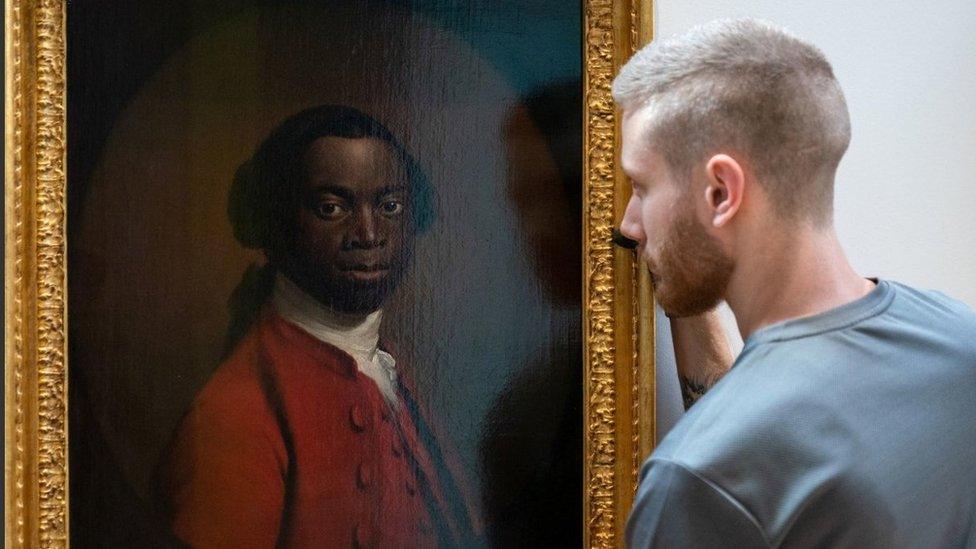Cambridge Black History colouring book part of Fitzwilliam Museum exhibition
- Published

Artist Selena Scott said it was "quite emotional" to be part of the Black Atlantic exhibition at the Fitzwilliam Museum in Cambridge
An artist said she felt "quite emotional" having created a colouring book for a new exhibition.
Cambridge Black History by Selena Scott shows how 12 historical black figures are connected to the city.
It is displayed in the Black Atlantic exhibition at the Fitzwilliam Museum which reflects how it was founded on profits from the transatlantic slave trade.
The 23-year-old artist grew up in Girton in the city.
She created the book as part of a two-month internship at the museum, with the brief to create a public resource.
She chose to create a colouring book because she wanted it to be "accessible to as broad a range of people as possible" and so that people could learn in a "fun and playful" way.

Amy Ida King who was the first black woman to get a degree from The University of Cambridge in 1903
One of the figures is Trinidad-born Amy Ida King who was the first black woman to get a degree from The University of Cambridge in 1903, but as women were not allowed to hold a degree at the time, she was not able to graduate and so is largely erased from history.
Others included are 18th Century child prodigy violinist, George Bridgetower, who supposedly had a feud with Beethoven and played for King George IV and Ira Aldridge, one of the first black actors to perform in a Shakespeare play.
She also included her granddad, who did a lot for education in the Caribbean, helping to bring it to poor communities and lived in Cambridge in later life.
The artist said it was "really touching" to learn that the 12 people in her book would have walked the same streets as she did.
Ms Scott, who is part of the Cambridge Black Creatives, said regular visits to the Fitzwilliam Museum as a child had inspired her to become an artist.
She said she would sketch the exhibits but "never felt like I belonged in these spaces".
"[It's a] beautiful building, very grand, and I could never have imagined seeing something so important to me" [in there]," she said.
She added she "never expected something so powerful and political" to come to Cambridge and added it felt "so special" and "quite emotional" to be part of it.

Follow East of England news on Facebook, external, Instagram, external and X, external. Got a story? Email eastofenglandnews@bbc.co.uk, external or WhatsApp 0800 169 1830
- Published28 August 2023
